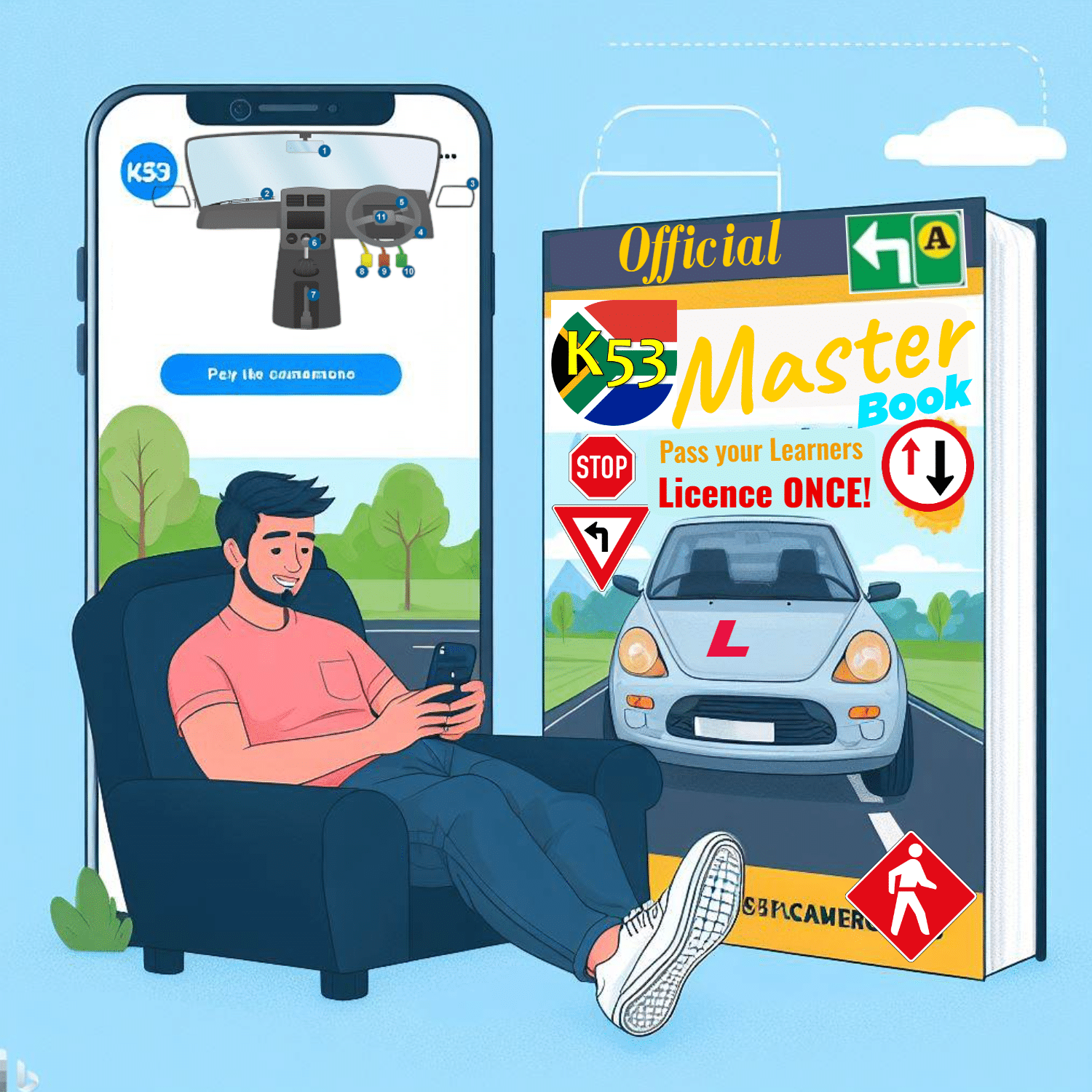There are many k53 road signs in South Africa, and it is important to know their meaning and when to use them. The K53 book by k53 Master outlines the use and meaning of all road signs.
Some of the most important road signs are described below.
Stop
This sign indicates that you must come to a complete stop at the stop line or intersection.

No Entry
This sign prohibits entry into an area or intersection.
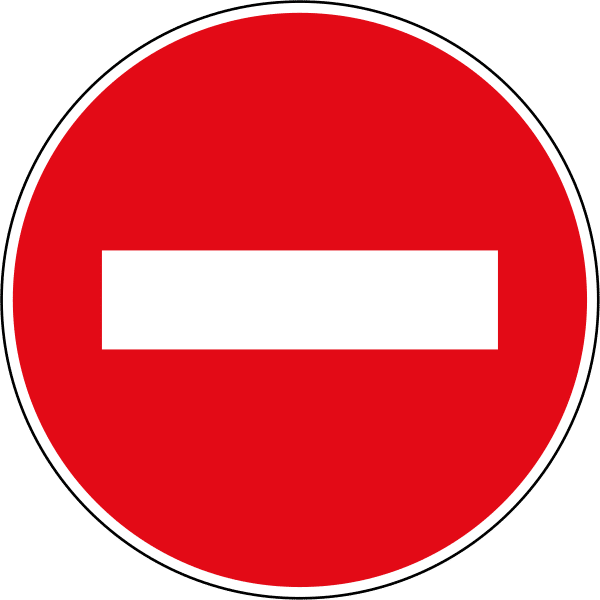
Yield
This sign means that you must give way to traffic on the intersecting road, but you do not have to come to a complete stop.
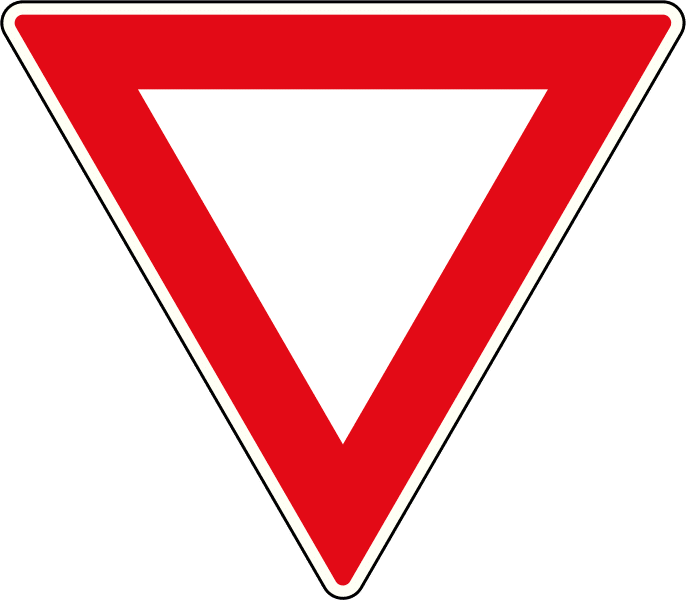
Give Way
This sign indicates that you must give way to traffic on the intersecting road.
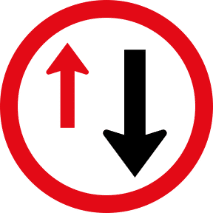
Table Of Content.
- Introduction to K53 Road Signs
- Types of K53 Road Signs
- Rules and Regulations for K53 Road Signs
- Common K53 Road Signs
- Conclusion
Introduction to K53 Road Signs

K53 road signs are an essential aspect of road safety and traffic regulation. Understanding the meaning and importance of these signs is crucial for all drivers. These signs serve as visual aids that provide information, warnings, and guidance, helping to maintain order and prevent accidents on the road.
“What are K53 Road Signs?”
K53 road signs are standardized signs used in South Africa to communicate specific messages to road users. These signs are part of the K53 driving test, which assesses a person’s ability to drive safely and efficiently. Each sign has a distinct shape, color, and symbol to convey its intended meaning quickly and universally.
“Why are K53 Road Signs Important?”
K53 road signs play a vital role in ensuring road safety by providing drivers with essential information about the upcoming road conditions, hazards, and regulations. They help drivers navigate unfamiliar areas, make informed decisions, and anticipate potential dangers. By obeying these signs, drivers can contribute to the overall safety of themselves and others on the road.
Types of K53 Road Signs
K53 road signs can be broadly categorized into three main types: regulatory signs, warning signs, and guide signs.
Regulatory Road Signs
Regulatory signs set forth rules and regulations that drivers must follow. Examples include speed limit signs, stop signs, and yield signs. These signs dictate specific actions or restrictions to control and regulate the flow of traffic.
Warning Road Signs
Warning signs notify drivers of potential hazards or dangerous conditions ahead. They serve as cautionary indicators for situations such as sharp curves, pedestrian crossings, or animal crossings. These signs allow drivers to adjust their speed and driving behavior accordingly to ensure safety.
Guide Road Signs
Guide signs provide direction and assist drivers in reaching their intended destinations. They often include information about distances, routes, and points of interest. Guide signs are crucial for drivers, particularly when navigating unfamiliar areas or planning their journey.
Rules and Regulations for K53 Road Signs
To ensure the effectiveness of K53 road signs, certain rules and regulations govern their placement, visibility, and maintenance.
“Sign Placement Rules”
K53 road signs must be positioned strategically along the road, ensuring they are visible to drivers in advance. The placement considers factors such as the distance needed for drivers to react appropriately, the speed limit, and any potential obstructions.
“Sign Visibility Rules”
Visibility is crucial for sign effectiveness. K53 road signs must be clearly visible and not obstructed by foliage, other objects, or poor lighting conditions
What are K53 Road Signs?

K53 Road Signs are a vital component of road safety, designed to provide clear and concise information to drivers, pedestrians, and other road users. These signs are standardized in accordance with the K53 driving test, which is used in many countries as a measure of roadworthiness. By understanding and adhering to these signs, drivers can navigate roads safely and efficiently.
Importance of K53 Road Signs
The importance of K53 Road Signs cannot be overstated. They serve as visual cues that communicate important information about road conditions, regulations, and potential hazards. These signs help drivers make informed decisions, such as determining the speed limit, identifying intersections, or alerting them to potential dangers ahead.
Types of K53 Road Signs
K53 Road Signs can be broadly categorized into three types: regulatory, warning, and guide signs.
1. Regulatory Road Signs: These signs emphasize laws and regulations that drivers must adhere to. Examples include “Stop” signs, “Give Way” signs, and “No Entry” signs. These signs help maintain order and ensure smooth traffic flow.
2. Warning Road Signs: Warning signs are designed to alert drivers to potential dangers or hazards ahead. They can include “Bump Ahead” signs, “Pedestrian Crossing” signs, or “Slippery Road” signs. These signs prompt drivers to exercise caution and adjust their driving behavior accordingly.
3. Guide Road Signs: Guide signs provide helpful information to drivers, guiding them to specific destinations or highlighting important landmarks. Examples include “Hospital Ahead” signs, “Rest Area” signs, or “Exit” signs. These signs assist drivers in planning their routes and making informed decisions on the road.
Rules and Regulations for K53 Road Signs
To ensure the effectiveness and visibility of K53 Road Signs, there are specific rules and regulations in place:
1. Sign Placement Rules: Signs must be placed at appropriate locations to ensure maximum visibility to drivers. Factors such as distance, height, and angle must be considered during installation to optimize their effectiveness.
2. Sign Visibility Rules: To ensure optimal visibility, signs must be free from obstructions and kept clean and well-maintained. Overgrown vegetation, graffiti, or dirt can reduce the visibility of road signs, compromising their purpose and effectiveness.
3. Sign Maintenance Rules: Regular maintenance, including cleaning, repairing, and updating signs, is crucial to maintain their integrity and ensure accurate information delivery.
Common K53 Road Signs
There are several
Why are K53 Road Signs Important?

Road signs play a crucial role in ensuring the safety and orderliness of our roads. K53 Road Signs, specifically designed and implemented in South Africa, are an essential component of the country’s road infrastructure. Understanding the importance of these signs is crucial for all drivers.
1. Communicating Regulation: K53 Road Signs effectively communicate regulations and rules that drivers must follow. Regulatory road signs, such as speed limits, no entry, or stop signs, provide clear instructions to drivers, ensuring uniformity and predictability on the roads.
2. Preventing Accidents: Road signs play a significant role in accident prevention. Warning road signs, such as those indicating sharp bends, slippery surfaces, or pedestrian crossings, alert drivers to potential hazards and enable them to take appropriate precautions.
3. Navigation and Route Guidance: Guide road signs assist drivers in navigating unfamiliar areas and choosing the correct route. These signs provide information about destinations, distances, and directions, helping drivers make informed decisions while driving.
4. Enhancing Traffic Flow: K53 Road Signs contribute to the smooth flow of traffic. By clearly indicating right of way, merging lanes, or roundabouts, these signs reduce confusion and promote efficient traffic management.
5. Legal Compliance: Familiarity with K53 Road Signs is essential for legal compliance. Ignorance or disregard of road signs can result in penalties, fines, or even legal consequences. Therefore, staying informed about the meaning and importance of these signs is crucial for all road users.
key Takeaway: K53 Road Signs are important as they communicate regulations, prevent accidents, guide navigation, enhance traffic flow, and ensure legal compliance. Understanding and adhering to these signs is crucial to maintaining safety and order on the roads.
Types of K53 Road Signs

K53 Road Signs can be classified into three main categories: Regulatory Road Signs, Warning Road Signs, and Guide Road Signs.
1. Regulatory Road Signs:
These signs are used to communicate and enforce traffic laws and regulations. They play a vital role in maintaining order and safety on the roads. Some common examples of regulatory road signs include:
– Stop Signs: These signs indicate that drivers must come to a complete stop at the intersection and yield the right-of-way to other vehicles or pedestrians.
– Speed Limit Signs: These signs display the maximum speed limit allowed on a particular road. It is important for drivers to adhere to these speed limits for their safety and the safety of others.
– No Entry Signs: These signs are placed at entrance points to prohibit drivers from entering a specific road or area.
2. Warning Road Signs:
Warning road signs are designed to alert drivers about potentially hazardous conditions ahead. They provide crucial information and give drivers time to adjust their driving behavior accordingly. Some examples of warning road signs include:
– Road Work Signs: These signs warn drivers about ongoing construction or maintenance work on the road. Drivers should proceed with caution and follow any posted instructions or detours.
– Curve Ahead Signs: These signs indicate an upcoming curve in the road. Drivers should reduce their speed and steer carefully to navigate the curve safely.
– Pedestrian Crossing Signs: These signs warn drivers to watch out for pedestrians crossing the road. Drivers should be prepared to stop and give pedestrians the right-of-way when necessary.
3. Guide Road Signs:
Guide road signs are used to provide information and guidance to drivers. They assist drivers in navigating unfamiliar roads, finding specific destinations, or choosing the correct lane or exit. Some examples of guide road signs include:
– Directional Signs: These signs provide information about the direction and distance to different cities, towns, or landmarks.
– Exit Signs: These signs indicate upcoming exits on highways or expressways, allowing drivers to plan their lane changes and exits in advance.
– Parking Signs: These signs provide information about parking regulations, restrictions, and available parking options in a particular area.
key Takeaway: Understanding the different types of K53 Road Signs is essential for safe and responsible driving. Regulatory signs enforce traffic laws, warning signs alert drivers of potential hazards, and guide signs provide necessary information for navigation.
Regulatory Road Signs
Regulatory road signs play a crucial role in maintaining order and ensuring the safety of all road users. These signs are designed to inform drivers of specific laws, regulations, and restrictions that must be followed. Here are some key types of regulatory road signs:

1. Stop Signs:
– Recognizable by their octagonal shape and red color, stop signs require drivers to come to a complete halt at the marked line or before entering an intersection.
– Important quote: “Failure to obey a stop sign can result in serious accidents, fines, and even legal consequences for the driver.”
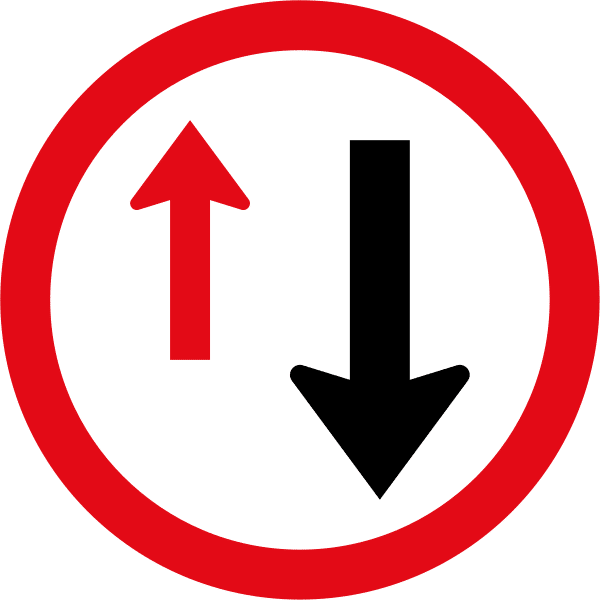
2. Give Way Signs:
– These triangular signs with a red border and white background indicate that drivers must yield the right-of-way to other vehicles or pedestrians approaching from the indicated direction.
– Important quote: “Ignoring a give way sign can lead to dangerous situations and collisions, especially at intersections with heavy traffic.”

3. No Entry Signs:
– Circular signs with a red border and white background, no entry signs indicate areas where entry is strictly prohibited for vehicles. This can include one-way streets, restricted zones, or private property.
– Important quote: “Disregarding a no entry sign can result in fines, potential damage to property, and endangering the safety of others.”
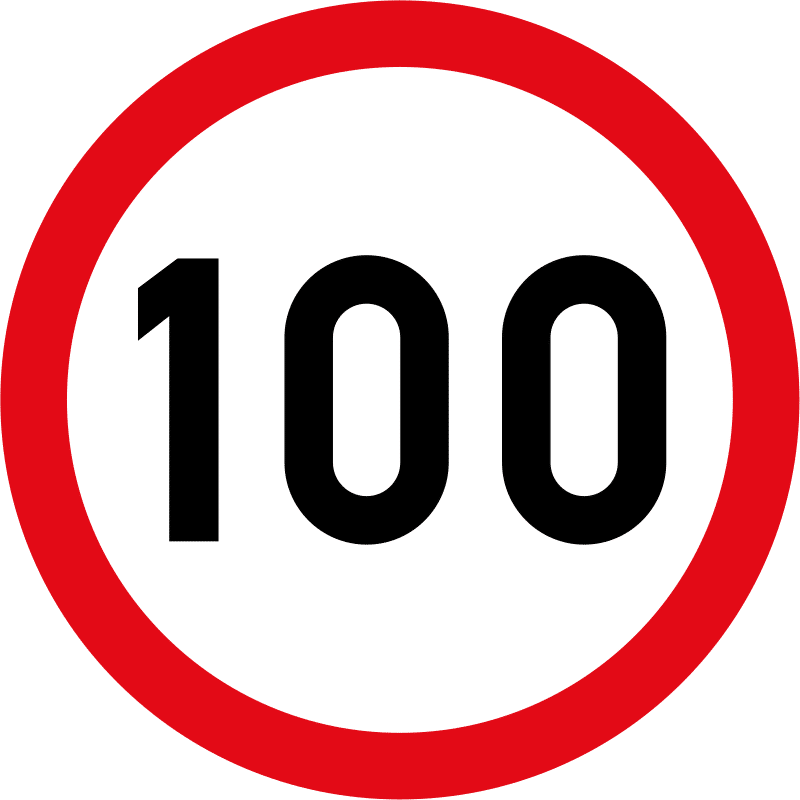
4. Speed Limit Signs:
– Rectangular signs with a red circle indicating the maximum allowed speed in kilometers per hour. These signs are placed to ensure the safety of both drivers and pedestrians.
– Important quote: “Exceeding the indicated speed limit can lead to accidents, fines, and the risk of losing your driver’s license.”
key Takeaway: Regulatory road signs are essential for maintaining order and safety on the roads. Drivers must pay attention to these signs and adhere to the regulations they indicate to prevent accidents and legal consequences.
Warning Road Signs
When it comes to K53 road signs, warning signs play a crucial role in ensuring the safety of drivers and pedestrians on the road. These signs are designed to alert drivers about potential hazards or conditions ahead, allowing them to adjust their speed and driving behavior accordingly. Here are some common warning road signs you should be familiar with:
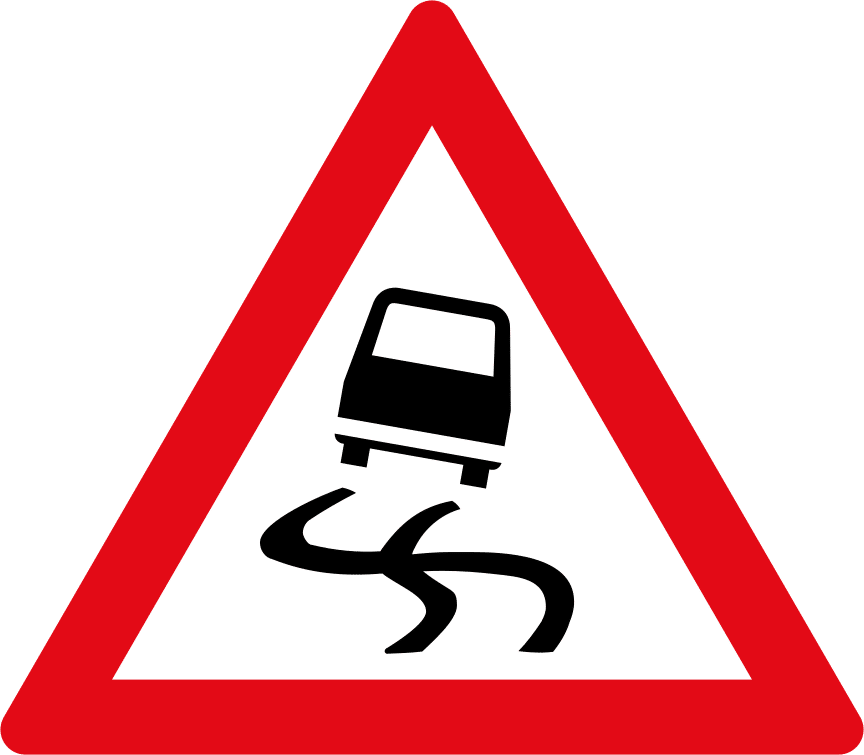
1. Slippery When Wet: This sign indicates that the road may become slippery during wet or rainy conditions. It’s important to reduce your speed and exercise caution when driving on these surfaces to prevent accidents.
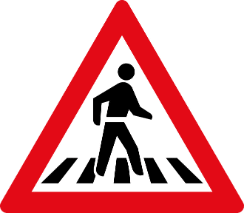
2. Pedestrian Crossing: This sign warns drivers of an upcoming pedestrian crossing or area where pedestrians frequently cross the road. It serves as a reminder to be vigilant and yield the right-of-way to pedestrians, ensuring their safety.
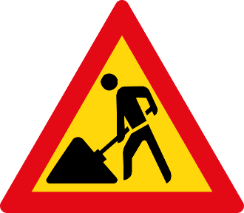
3. Road Work Ahead: This sign alerts drivers to ongoing road work or construction zones ahead. It’s important to slow down, follow any instructions given by workers, and be prepared for lane closures or detours.
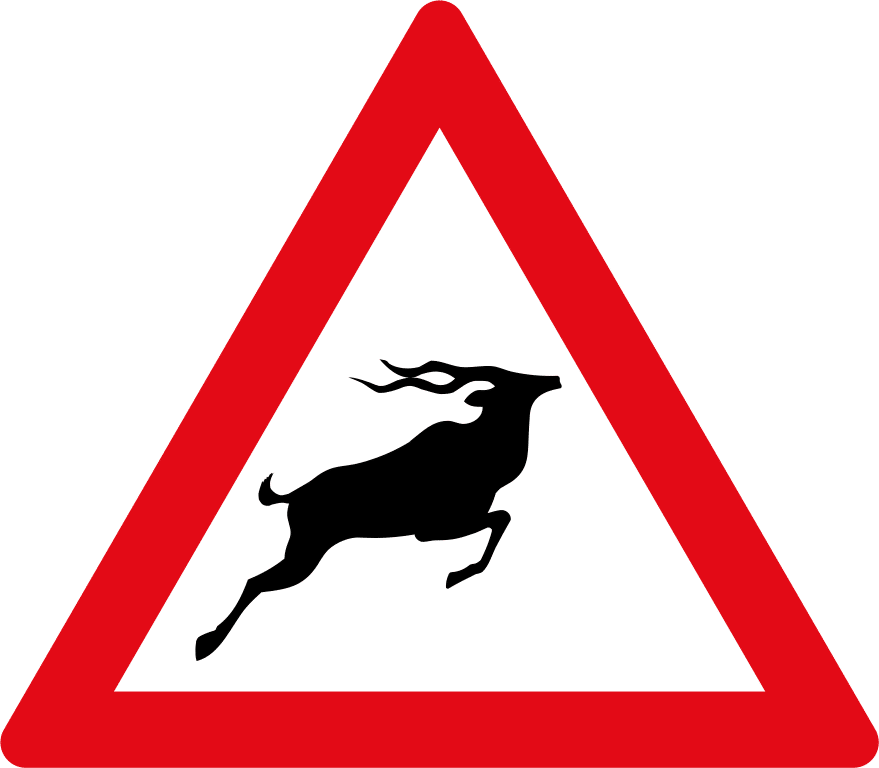
4. Animal Crossing: This sign indicates areas where wildlife, such as deer or livestock, may frequently cross the road. It’s crucial to watch for any signs of movement and reduce your speed to avoid collisions with animals.
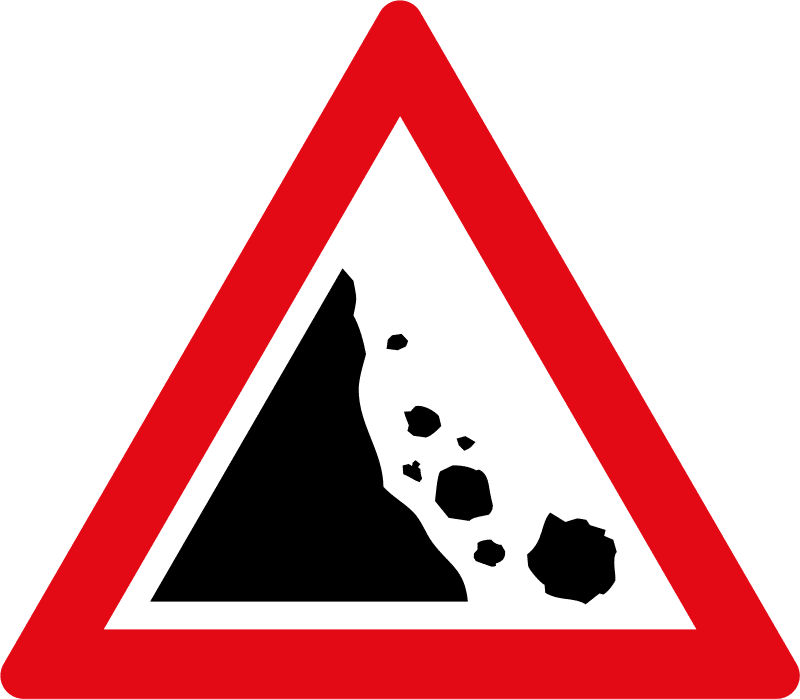
5. Falling Rocks: This sign warns drivers of areas where falling rocks or debris may pose a danger. It’s essential to stay alert and drive cautiously to prevent accidents caused by rocks or other objects falling onto the road.
Remember, warning road signs are there to alert you to potential hazards and ensure your safety on the road. Always pay attention to these signs, adjust your driving accordingly, and be prepared for unexpected situations.
key Takeaway: Warning road signs are essential in alerting drivers to potential hazards on the road. Being familiar with these signs enables drivers to adjust their speed and driving behavior accordingly, promoting road safety for everyone.
Guide Road Signs
Guide road signs play a crucial role in providing information and guidance to drivers on the road. These signs are designed to assist drivers in navigating their way to their intended destination. Here are some common types of guide road signs:
1. Destination Signs: These signs provide information about the direction and distance to various cities, towns, or landmarks. They help drivers plan their route and make informed decisions about which direction to take.
2. Route Signs: Route signs are used to indicate the route numbers of major highways or roads. They are helpful for drivers who are following specific routes or highways and need to ensure they stay on the correct road.
3. Tourist Attraction Signs: These signs are specifically designed to point out nearby tourist attractions or points of interest. They are often accompanied by pictorial symbols or logos to make them easily recognizable and grab the attention of drivers.
4. Service Signs: Service signs provide information about various facilities and services available along the road, such as restaurants, hotels, fuel stations, and rest areas. They are particularly useful for drivers who may need to take a break or refuel during their journey.
It’s worth noting that guide road signs must be placed strategically and be easily visible to drivers. They should have clear and concise information, allowing drivers to make quick and informed decisions. By following guide road signs, drivers can navigate unfamiliar areas with confidence and reach their destination safely.
key Takeaway: Guide road signs are an essential part of the K53 road sign system, providing important information and guidance to drivers. They include destination signs, route signs, tourist attraction signs, and service signs. By adhering to these signs, drivers can easily plan their route, find tourist attractions, and locate necessary services along the way.
Rules and Regulations for K53 Road Signs
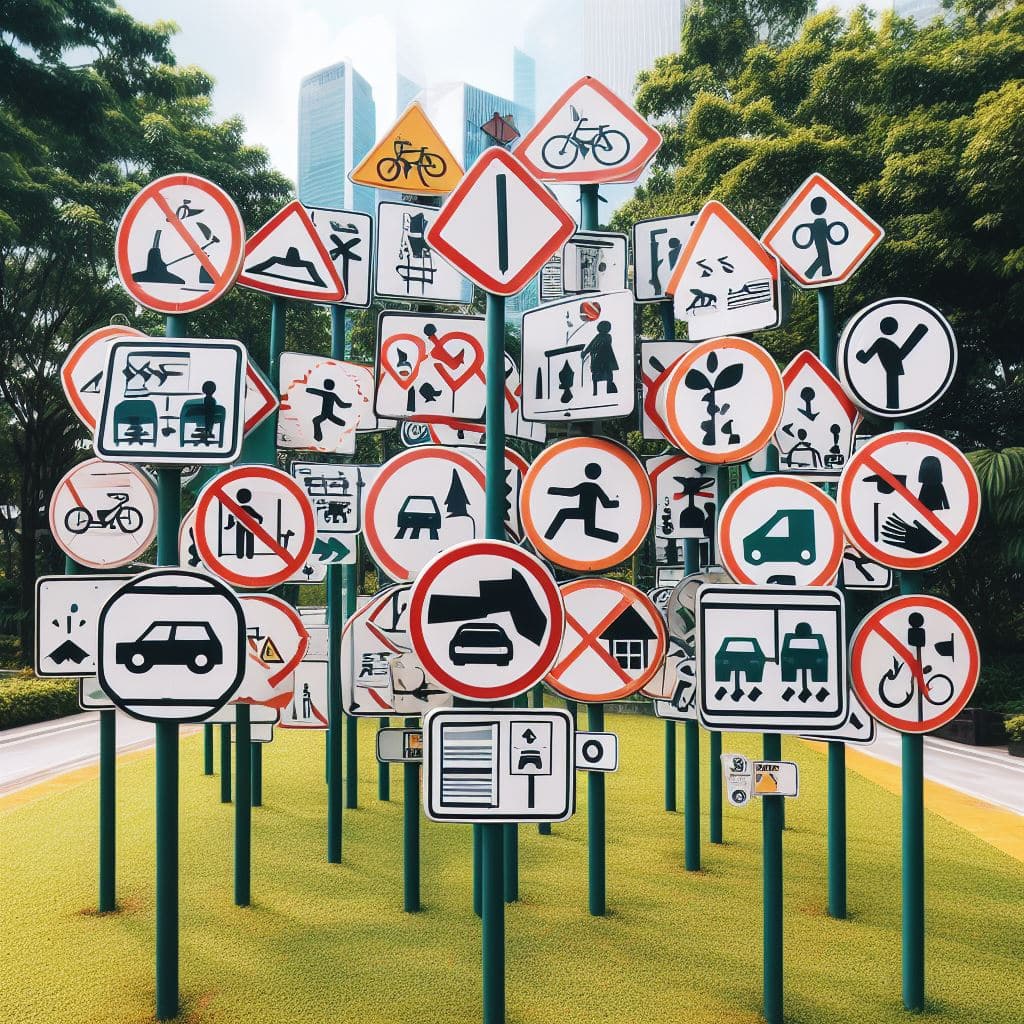
Signs play a crucial role in maintaining order and safety on the roads. Understanding the rules and regulations governing the placement, visibility, and maintenance of K53 road signs is essential for both drivers and road authorities. Let’s take a closer look at some of the key guidelines to ensure proper implementation of these road signs.
Sign Placement Rules:
– K53 road signs should be positioned in accordance with standard regulations and guidelines. They must be clearly visible and easily comprehensible to drivers.
– Signs should be placed at an appropriate distance from intersections, road junctions, and other critical points to provide drivers with sufficient time to react and make informed decisions.
– It is vital to consider factors such as height, distance, and obstructions that may affect the visibility of the signs. Proper placement helps ensure that drivers can easily detect and understand the messages conveyed by the signs.
Sign Visibility Rules:
– Road signs must be clearly visible both during the day and at night. This necessitates proper design, reflective materials, and adequate lighting arrangements.
– The size of the signboards and the fonts used for text should be proportional to the distance at which they need to be read. This ensures legibility and comprehension for drivers approaching the signs.
– Regular inspection and maintenance of sign visibility are essential to ensure that signs remain in good condition, free from any obstruction or damage that could impede their effectiveness.
Sign Maintenance Rules:
– Road authorities have a responsibility to regularly inspect, repair, and maintain K53 road signs to ensure their continued visibility and effectiveness.
– Faded or damaged signs should be promptly replaced or repaired to prevent confusion or misinterpretation by drivers.
– Monitoring and updating the signs in response to changes in road conditions, traffic patterns, or new regulations are crucial to providing accurate and up-to-date information to drivers.
key Takeaway: Proper placement, visibility, and maintenance of K53 road signs are crucial for ensuring driver safety and maintaining order on the roads. Drivers must adhere to these rules, and road authorities need to regularly inspect and maintain the signs to facilitate effective communication of important information.
Sign Placement Rules
When it comes to placing K53 road signs, there are certain guidelines that need to be followed to ensure their effectiveness and visibility. Here are the key sign placement rules to keep in mind:
1. Height and Position: Road signs should be mounted at a consistent height to ensure easy visibility for drivers. The recommended height is typically between 1.2 to 1.5 meters from the ground. Moreover, signs should be positioned in such a way that they are clearly visible and not obstructed by any objects like trees or buildings.
2. Distance from Intersection: Signs should be placed at an appropriate distance from intersections to give drivers enough time to react and make informed decisions. As a general rule, signs should be installed at least 30 meters before the intersection, allowing motorists to identify and understand the upcoming road conditions or regulations.
3. Reflectivity and Illumination: To enhance visibility, road signs should be equipped with reflective materials that ensure they are clearly visible during both daylight and nighttime. Depending on the location and requirements, signs can be retroreflective (reflecting light back to the source) or internally illuminated.
4. Sign Mounting: Proper mounting is crucial to prevent signs from falling or getting obscured over time. Signs should be securely mounted on a suitable pole, post, or structure using approved brackets and fixings. This ensures that the sign remains stable, regardless of weather conditions or unforeseen circumstances.
key Takeaway: When placing K53 road signs, it is essential to consider their height, position, distance from intersections, reflectivity, and proper mounting. Adhering to these sign placement rules helps ensure that road signs are visible, effective, and provide clear guidance to drivers.
Sign Visibility Rules
Ensuring proper visibility of road signs is crucial for maintaining safety on the roads. Road signs need to be clearly visible to drivers from a sufficient distance to allow them to make informed decisions and take appropriate actions. Here are some important sign visibility rules to consider:
1. Size and Height: Road signs should be of appropriate size and height to ensure visibility for all drivers. The size of the sign should be proportional to the distance from which it needs to be read. The height of the sign should be adjusted so that it is easily visible to both car and truck drivers.
2. Contrast and Colors: The color contrast of road signs plays a significant role in making them easily readable. The colors should be bold and contrasting, such as black on a white background or yellow on a black background. This helps in enhancing visibility, especially in low light conditions.
3. Clear Text and Graphics: The text and graphics on the road signs should be clear and easily legible. The font size should be appropriate, allowing drivers to read the sign without any difficulty. The graphics should be simple, conveying the intended message clearly.
4. Placement and Obstructions: Road signs should be placed in a location that allows for maximum visibility. They should be positioned in a way that prevents obstructions, such as tree branches or other structures, from blocking the view. Additionally, signs should not be placed too close together, as it can lead to confusion and decreased visibility.
5. Adequate Lighting: Proper lighting is essential for road signs, especially during nighttime. Signs should be equipped with reflective materials or appropriate lighting to enhance visibility in dark conditions. This ensures that drivers can easily spot and interpret the signs, improving overall road safety.
By adhering to these sign visibility rules, drivers can better understand the messages conveyed by road signs and respond appropriately. Ensuring clear visibility of road signs is a shared responsibility for both road authorities and drivers, contributing to a safer driving experience.
key Takeaway: Sign visibility rules are crucial for ensuring clear communication and enhanced safety on the roads. By following size and height guidelines, using contrasting colors, maintaining clear text and graphics, ensuring proper placement, and providing adequate lighting, road signs can be made more visible and effective for drivers.
Sign Maintenance Rules
To ensure the effectiveness and visibility of K53 road signs, it is crucial to adhere to proper sign maintenance rules. By regularly inspecting and maintaining road signs, potential hazards and confusion can be minimized. Here are some important sign maintenance rules to follow:
1. Regular Cleaning: Road signs should be periodically cleaned to remove dirt, debris, and any other substances that may obstruct the visibility of the sign. This can be achieved by using appropriate cleaning agents and tools.
2. Replacement of Faded Signs: Over time, road signs may fade due to exposure to sunlight and harsh weather conditions. Faded signs can be difficult to read, leading to confusion and the potential for accidents. It is essential to replace faded signs promptly to maintain their effectiveness.
3. Repairing Damaged Signs: Signs that have been damaged or vandalized should be repaired or replaced as soon as possible. This includes fixing bent or tilted signs, replacing missing reflectors or letters, and ensuring that the sign is securely attached to its mounting.
4. Addressing Obstructed Visibility: It is essential to regularly check for any obstructions that may hinder the visibility of road signs. Trim overgrown vegetation, remove obstacles or debris that may block the sign, and ensure that surrounding structures do not partially or fully obscure the sign.
5. Reflectivity Maintenance: Many road signs are designed with reflective materials to enhance visibility during nighttime or adverse weather conditions. It is crucial to monitor and maintain the reflectivity of these signs by replacing reflective materials when they become worn out or damaged.
Remember, proper sign maintenance is vital for ensuring the continued safety and effectiveness of K53 road signs. Regular inspections, cleaning, and prompt repairs or replacements contribute to clear and visible road signage, reducing the risk of accidents and promoting smooth traffic flow.
key Takeaway: Proper sign maintenance is essential to ensure the visibility and effectiveness of K53 road signs. Regular cleaning, replacement of faded signs, prompt repairs, obstruction-free visibility, and reflectivity maintenance are crucial for minimizing accidents and promoting road safety.
Common K53 Road Signs

Understanding the meanings and significance of common K53 road signs is essential for every driver. Familiarizing yourself with these signs will ensure you are well-prepared to navigate the roads safely and abide by traffic regulations. Below are some of the most frequently encountered K53 road signs:
1. Stop/Give Way Signs:
– Recognized by their distinct red color and octagonal shape, stop signs require drivers to come to a complete halt at intersections.
– Give Way signs, on the other hand, indicate that drivers must yield to traffic from other directions before proceeding.
2. Speed Limit Signs:
– Speed limit signs inform drivers of the maximum allowed speed on a particular road or in a specific area.
– These signs play a crucial role in ensuring road safety and should always be observed.
3. Turn Signs:
– Turn signs come in various forms, such as left turn, right turn, or u-turn signs, and provide guidance on proper maneuvering at intersections.
– It is important to follow these signs to avoid accidents and maintain the smooth flow of traffic.
4. Warning Signs:
– Warning signs are designed to alert drivers about potential hazards on the road ahead.
– Examples include signs for sharp curves, pedestrian crossings, animal crossings, or construction zones.
Remember, these are just a few examples of common K53 road signs. There are numerous others that you should be familiar with to ensure safe and responsible driving.
key Takeaway: Familiarize yourself with common K53 road signs to ensure safe and responsible driving. These include stop/give way signs, speed limit signs, turn signs, and warning signs.
Stop/Give Way Signs
Stop/Give Way signs are an essential part of K53 road signs that drivers encounter on the roads. These signs play a crucial role in ensuring safety and maintaining traffic flow. When approaching a Stop sign, drivers must come to a complete halt and yield the right-of-way to other vehicles or pedestrians. This allows for a smooth and organized movement of traffic at intersections. Similarly, Give Way signs indicate that drivers must slow down and give priority to vehicles approaching from the right or designated directions.
To comply with the regulations and ensure road safety, it is important for drivers to familiarize themselves with the specific rules associated with Stop/Give Way signs. Here are some key points to remember:
1. Clear Visibility: Stop/Give Way signs should be clearly visible to all approaching drivers. They should not be obstructed by trees, vegetation, or any other objects that may limit their visibility.
2. Complete Stop: When encountering a Stop sign, it is mandatory to bring the vehicle to a complete stop. This allows drivers to assess the traffic situation and proceed only when it is safe to do so.
3. Right-of-Way: Drivers must yield the right-of-way to other vehicles or pedestrians as indicated by the sign. Failure to do so can lead to accidents and violations.
4. Intersections: Stop signs are typically found at intersections, while Give Way signs may be present at T-junctions or uncontrolled intersections. It is important to pay attention to these signs and respond accordingly.
Remember, adhering to Stop/Give Way signs is crucial for maintaining road safety and preventing accidents. Always exercise caution and follow the rules associated with these signs to ensure a smooth traffic flow.
key Takeaway: Stop/Give Way signs are important K53 road signs that require drivers to come to a complete halt and yield the right-of-way. Adhering to these signs is essential for maintaining road safety and preventing accidents.
Speed Limit Signs
Speed limit signs serve as one of the most crucial K53 road signs. They inform drivers of the maximum speed they are allowed to travel on a particular road. These signs are determined based on various factors, such as road conditions, traffic density, and safety considerations. It is essential for drivers to obey these speed limit signs to ensure their safety and the safety of others on the road.
Importance of Speed Limit Signs
– Promote Road Safety: Speed limit signs are designed to control the speed of vehicles, reducing the risk of accidents and collisions. By adhering to the specified speed limits, drivers can better maintain control of their vehicles and react in a timely manner to unexpected situations.
– Mitigate Traffic Congestion: Speed limit signs also play a role in managing traffic flow. By regulating the speed of vehicles, these signs help maintain a steady and controlled movement of traffic, minimizing congestion and ensuring a smoother driving experience for everyone.
– Protect Pedestrians and Vulnerable Road Users: Speeding vehicles pose a significant risk to pedestrians and other vulnerable road users. Speed limit signs help enforce safe driving practices that protect those who are most at risk, such as pedestrians, cyclists, and children.
Quote: “Speed limit signs are not mere suggestions; they are legally binding. Adhering to these signs is essential for creating a safe and efficient road environment.” – Traffic Management Expert
Types of Speed Limit Signs
– Fixed Speed Limit Signs: These signs display a specific numerical value indicating the maximum speed allowed on the road, such as 60 km/h or 120 km/h. They are typically placed in areas where the speed limit remains constant.
– Variable Speed Limit Signs: In some situations, speed limit signs may change based on certain conditions, such as heavy traffic, adverse weather, or construction. Variable speed limit signs use electronic displays to indicate the appropriate speed for the specific situation.
Benefits of Observing Speed Limits
– Improved road safety
– Reduced risk of accidents and fatalities
– Legal compliance and avoidance of fines and penalties
– Reduced likelihood of causing traffic congestion
– Enhanced overall road experience for all users
key Takeaway: Speed limit signs are crucial for road safety, controlling vehicle speed, minimizing congestion, and protecting pedestrians and vulnerable road users. Adhering to speed limits is not only a legal requirement but also a responsible choice that contributes to a safer road environment.
Turn Signs
Turn signs are an essential component of K53 road signs, guiding drivers on when and how to make a turn at intersections. These signs play a crucial role in ensuring traffic flow and safety on the roads. Here are some common types of turn signs:
1. Left Turn Only:
This sign indicates that drivers must only make a left turn at the upcoming intersection. It is accompanied by an arrow pointing left, clearly indicating the direction to be taken. Drivers should position their vehicles in the leftmost lane and yield to oncoming traffic before making the turn.
2. Right Turn Only:
Conversely, the right turn only sign indicates that drivers can only make a right turn at the intersection. The sign is often accompanied by an arrow pointing right. Drivers should approach the intersection on the right side of the road and yield to pedestrians and oncoming traffic before executing the turn.
3. No Left Turn/No Right Turn:
These signs forbid drivers from making either a left or right turn at the intersection. They are typically placed to control traffic flow in specific areas where turns might be dangerous or cause congestion. It is important for drivers to obey these signs and find an alternative route if necessary.
4. U-Turn Permitted:
The U-turn permitted sign signifies that drivers are allowed to make a U-turn at the intersection, provided it can be done safely and without hindering other traffic. When encountering this sign, drivers should signal their intent, thoroughly check for oncoming traffic, and execute the maneuver cautiously.
Remember, always pay close attention to the road signs and adhere to their instructions. They are designed to ensure safety and orderly movement of vehicles. Failure to comply can result in accidents or traffic violations.
key Takeaway: Turn signs are crucial for guiding drivers on when and how to make turns at intersections. They include left turn only, right turn only, no left turn, and no right turn signs. It is important for drivers to pay attention to these signs and follow their instructions to ensure safe and efficient traffic flow.
Warning Signs
Warning signs are an integral part of the K53 road sign system. These signs are designed to alert drivers about potential hazards or dangers ahead, allowing them to take necessary precautions and adjust their driving accordingly. Here are some commonly used warning signs:
1. Slippery Road: These signs are placed when the road surface is prone to becoming slippery, such as during rain, snow, or when oil is spilled on the road. They serve as a cautionary measure for drivers to reduce speed and exercise extra caution to prevent skidding or loss of control.
2. Road Narrows: This sign indicates that the road ahead narrows, either due to physical obstacles or lane reductions. It warns drivers to be prepared for a narrower road and adjust their position accordingly to ensure a safe and smooth passage.
3. Pedestrian Crossing: Pedestrian crossings are areas where pedestrians have the right of way to cross the road. The warning sign alerts drivers to be extra vigilant and yield to pedestrians who may be crossing the road, ensuring their safety and preventing accidents.
4. Animal Crossing: In rural areas, it is common for animals such as cows, horses, or deer to cross the road. Animal crossing signs warn drivers to be cautious and slow down as there may be animals on or near the road, reducing the risk of collisions.
5. Traffic Lights Ahead: This warning sign alerts drivers of an upcoming traffic signal or intersection. It advises them to prepare to stop or slow down, ensuring a smooth transition from one road segment to another.
Remember, these warning signs play a crucial role in ensuring road safety. Drivers must understand their meaning and respond appropriately to minimize the risk of accidents or other hazardous situations.
key Takeaway: Warning signs in the K53 road sign system are designed to alert drivers about potential hazards or dangers ahead. They serve as a proactive measure to prevent accidents and require drivers to take necessary precautions.
Conclusion
In conclusion, understanding K53 road signs is crucial for all road users. By familiarizing yourself with these signs, you can ensure your safety on the roads and contribute to a smooth flow of traffic. Remember that road signs are there to provide important information and instructions. Always obey them to avoid accidents and legal consequences. Additionally, keep in mind the following tips to adhere to road sign regulations:
1. Stay updated: Be aware of any changes in road signs and regulations. Stay informed through official sources such as government websites or driving manuals.
2. Practice observation: Continuously scan the road for signs and interpret their meanings correctly. Stay attentive to changes in road conditions and adjust your driving accordingly.
3. Follow the law: Adhere to all the rules and regulations associated with road signs. This includes obeying speed limits, stopping at stop signs, yielding to pedestrians, and following directional signs.
4. Use common sense: Road signs may not cover every situation, so use your judgment and common sense when encountering unusual or unfamiliar circumstances.
Remember, road signs are designed to ensure a safe and efficient driving experience. By understanding and adhering to K53 road signs, you contribute to a safer road environment for everyone.
key Takeaway: Familiarize yourself with K53 road signs and follow them diligently to ensure your safety and contribute to the smooth flow of traffic.
Summary of K53 Road Signs
Road signs play a crucial role in ensuring safety and order on the roads, and K53 road signs are no exception. Understanding the meaning and importance of these signs is essential for all drivers. Here is a comprehensive summary of the key types of K53 road signs and their applications.
1. Regulatory Road Signs:
These signs communicate specific rules and regulations that drivers must adhere to. Examples include the “STOP” sign, which indicates that drivers must come to a complete halt at an intersection, and the “YIELD” sign, which signals that drivers must give way to oncoming traffic.
2. Warning Road Signs:
Warning signs are designed to alert drivers about potential hazards or dangers on the road ahead. These signs are often yellow and diamond-shaped. Examples include the “CAUTION: PEDESTRIAN CROSSING” sign, which warns drivers to be extra cautious and watch out for pedestrians, and the “SLIPPERY WHEN WET” sign, indicating that the road may become slippery during wet conditions.
3. Guide Road Signs:
Guide signs are meant to provide drivers with information and directions. These signs can be found on highways and major roads. Examples include the “EXIT” signs, which guide drivers to the correct exit ramps, and the “HOSPITAL” signs, which inform drivers of nearby medical facilities.
4. Common K53 Road Signs:
These road signs are commonly encountered on most roads and are crucial for safe driving. They include the “SPEED LIMIT” signs, which indicate the maximum speed allowed in a specific area, and the various “TURN” signs, such as “LEFT TURN ONLY” or “RIGHT TURN ONLY,” which provide directions for turning at intersections.
In addition to these signs, there are numerous other K53 road signs that drivers should familiarize themselves with to ensure road safety.
key Takeaway: Understanding the different types of K53 road signs is essential for all drivers to adhere to traffic rules and regulations, ensuring the safety of themselves and others on the road.
Tips for Adhering to Road Sign Regulations
When it comes to adhering to road sign regulations, there are a few key tips to keep in mind. These tips will help ensure your safety on the road and prevent any potential traffic violations. Here are some recommendations to follow:
1. Familiarize Yourself with Sign Meanings: Take the time to understand the meaning of different road signs. Study the shapes, colors, and symbols to ensure that you can quickly recognize and interpret them while driving. This will help you take appropriate actions and make informed decisions on the road.
2. Observe Sign Placement Rules: Pay attention to where road signs are placed. They are strategically positioned to provide important information about upcoming road conditions, hazards, or regulations. Understanding their placement will help you stay alert and respond accordingly.
3. Respect Speed Limit Signs: Speed limit signs are crucial for maintaining road safety. Always adhere to the speed limits indicated on these signs, especially in school zones and residential areas. Speeding not only puts your life at risk but also endangers the lives of others around you.
4. Follow Turn Signs: Turn signs provide essential information about upcoming intersections and directions. Make sure to read these signs well in advance, and signal your intentions accordingly. Failure to follow turn signs can lead to accidents or confusion for other drivers.
5. Pay Attention to Warning Signs: Warning signs are designed to alert drivers of potential dangers or hazards ahead, such as sharp bends, pedestrian crossings, or construction zones. Take these signs seriously and adjust your driving accordingly to prevent accidents or road hazards.
6. Regularly Check Sign Visibility: Some road signs may become obstructed or faded over time due to weather conditions or vandalism. Report any signs that are difficult to see or understand to the appropriate authorities. It’s crucial to have clear and visible signs for the safety of all road users.
key Takeaway: Adhering to road sign regulations is vital for road safety. Familiarize yourself with the meaning of different signs, respect speed limits, follow turn signs, pay attention to warnings, and report any visibility issues. By doing so, you can ensure your safety and the safety of others on the road.
Conclusion
Looking to improve your driving skills? Check out our guide to understanding K53 road signs. This will help you to understand the meaning and importance of various signs, and their applications. Not sure where to turn for help? Look no further! Our guide will help you to find the right source of information for your driving needs. If you need to take driving lessons, visit Bliksem Driving School for the best driver training in South Africa
Check out our available learners licence courses & k53 book
K53 Masterclass
The ultimate k53 Learners licence course. Video lessons + questions and explanations. Presented by AI.
On The Go Quizzes
1500+ Practice questions with explenations. All the possible question scenarios to pass once
K53 Book
The official 2023 edition k53 Book in pdf and online form with free test questions and test trouble shoot guide

Free K53 mock test
Free k53 Online test that mimics the actual test at the traffic department. Take the test and evaluate your knowledge.
Online K53 Test Preparation: Guaranteed Pass
Our K53 Learners Licence Masterclass, along with our ‘On The Go Quizzes’ courses, come with a solid guarantee: pass or get your money back. So, if you finish the course (pass our online k53 test) and attempt the test at the traffic department within two weeks but don’t pass, rest assured, we’ll give you a full refund!





